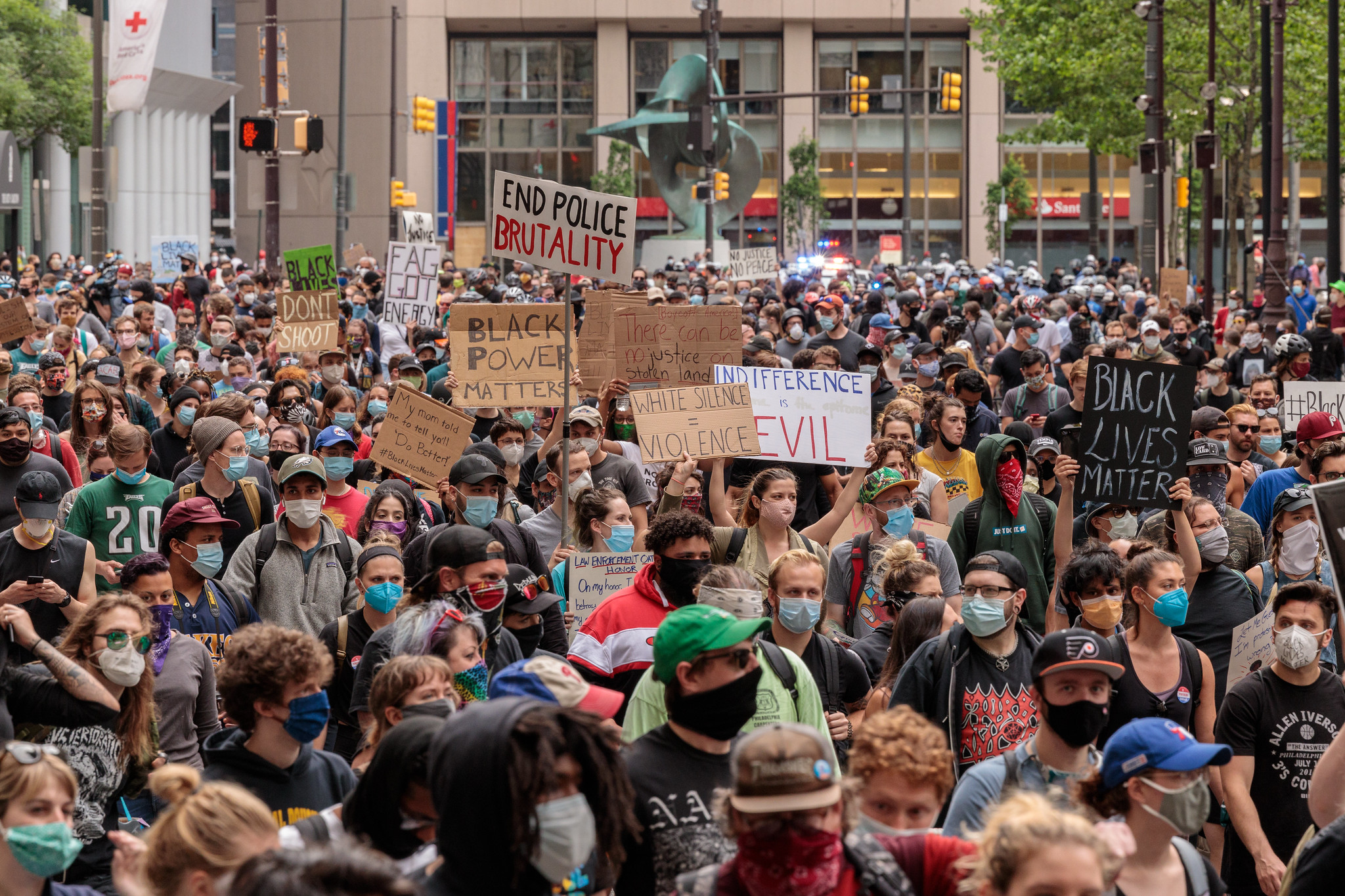
Thousands of masked faces marched through the streets of Philadelphia this weekend, holding signs that read “AmeriKKKa,” “I can’t breathe” and “Keep your knees off our necks.”
Philadelphia is one of many cities across the country participating in Black Lives Matter protests in honor of George Floyd, another unarmed black man dead at the hands of the police.
Protests in Philadelphia began peacefully Friday afternoon, but eventually there were fires set and damages done to businesses by more violent individuals set on disrupting the protests. In response, a curfew was implemented by Philadelphia Mayor Jim Kenney for the over few nights. On Sunday and Monday, these curfews started as early as 6 p.m.
Here is a quick summary of the events that occurred following Friday’s peaceful protest:
Nearly every store on Walnut Street near Rittenhouse Square was broken into and looted, but members of the community came out to clean up the area early Saturday morning, with the store owners being quite understanding.
In another peaceful protest on Monday, police cornered and trapped protestors blocking traffic on Interstate 676. The police began shooting tear gas canisters into the small group of protestors who had been forced between the Vine Street Expressway and I-676, blocking off any room for an escape.
In West Philadelphia, police cars were set on fire near 52nd and Market Streets. While Philadelphia Police were quick to respond with force to the people on that scene and in the historically black community of Kensington, there was a group of white men with bats and other weapons in Fishtown out past curfew.
On top of curfew violations in large droves by the haphazardly-organized group, Philadelphia Police allowed it to occur peacefully. According to a Philadelphia Inquirer article, Police Capt. William Fisher thanked them and politely instructed the men to go home at 6:30 p.m. — 30 minutes after the city-mandated curfew had begun.
On Monday in southwest Philadelphia, there was a fatal car crash that was completely disconnected from any protest, but it shook up the community nonetheless, as the cars and the injured people were in the middle of a busy street.
Across the street from City Hall, where a statue of former police commissioner and mayor Frank Rizzo stood, the defacement that had been cleared off over the weekend was rendered moot. Rizzo stood until early Wednesday morning, when his statue was removed by city officials.
Rizzo was police commissioner from 1967 to 1971, and then mayor from 1972 to 1980. During that time, he was notorious for his run-ins with black activist groups, many of which resulted in violent arrests. This weekend, protesters across the country have been vandalizing Confederate monuments, and Philadelphia’s equivalent is the historically brutal, aggressive and right-wing Rizzo.
In 1967, during Rizzo’s reign as police commissioner, a student walkout was organized to protest the racially unjust policies of the Philadelphia school system. In response, Rizzo and hundreds of officers clubbed protesting teenagers with nightsticks and arrested almost 60 protesters after students were said to have climbed on top of car hoods.
This incident was only one of Rizzo’s many run-ins with LGBTQ groups and black activist groups. These groups included the Black Panthers, who were often raided and strip-searched, and MOVE, a black liberation and environmentalist group that still exists today. In the ’70s, MOVE had been in conflict with Philadelphia police for years. In 1978, there was a police stand-off in Powelton Village, leading to the death of a police officer and the imprisonment of nine of MOVE’s members.
On May 13, 1985, after Rizzo’s time as mayor, one of the most forgotten and shocking acts of police power — sometimes referred to as “the city that bombed itself” — occurred. Police officers were ordered to remove MOVE members from their home on Osage Avenue, leading to another stand-off. Gunfire was exchanged between police officers on the street and the MOVE members inside the home that had been repurposed into a bunker. After evacuating the rest of the block’s residents the night before, police forces dropped a bomb on the home from a helicopter, killing 11 people, destroying 61 homes and leaving more than 250 citizens homeless.
Since that day in 1985, this extreme has not been used in response to black activist groups. But countless Black Lives Matter, anti-racism and anti-police brutality movements have occurred in Philadelphia since, many of which have occurred in the past 10 years.
There were protests following the deaths of 17-year-old Trayvon Martin in 2012, 19-year-old Renisha McBride in 2013 and 18-year-old Michael Brown in 2014. Protests followed the deaths of Brandon Tate-Brown, who was shot after being pulled over, and Freddie Gray, who died in the back of a transport van in 2015. Protests honored the Black Lives Matter movement at the Democratic National Convention in 2016. Protests followed the death of David Jones, who was shot in the back of the head in 2017. Protests followed the arrests of two black men for waiting for a friend without buying anything in Starbucks in 2018.
Many citizens are calling their local elected officials, asking for explanations and reparations against the police. Many bail funds have been set up for those who have been arrested during the various protests.


